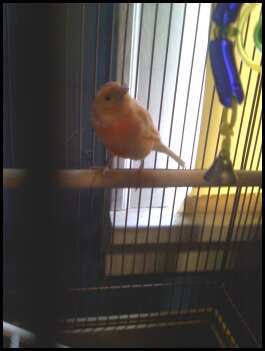The most commonly used "color food" for red factor canaries contains canthaxanthin (my spelling may be off), which is a vitamin-A derivative pigment. When used correctly, there is no harm to the canary. Previous posts stating that it accumulates in the liver and causes early death are only partly true. Color food is meant to be fed only for molting times. Basically, when you first see a molted feather in the bottom of the cage, start feeding color food. When you see no more, wait two or three weeks, then stop feeding the color food. If you feed more than is required for longer than the molting period (i.e. giving large amounts of color food every day year-round) then yes, you will probably cause problems to your bird. But if you stop at the end of the molt, any excess canthaxanthin that remains in the body will be utilized as vitamin-A long before the next year's molt begins. And if all this seems too complicated, and you'd rather just give something all the time and not have to pay attention to molting times, then look for color food that does NOT contain canthaxanthin. These will contain various caratenoids from sources like paprika and dark leafy greens. Birds fed "natural" color food (without canthaxanthin) will color up, but not to the same intense degree as if they had been given canthaxanthin. Also, the color food works only while feathers are actively being grown. If your bird doesn't have any feathers growing, feeding color food will not change its color.
If anyone's interested, I remember reading a small book about the history of red factor canaries, which the author labeled "the first transgenic pet" because "red" is not naturally found in canaries, but was bred into them by hybridization with the hooded siskin from Central America. First generation hybrids resulted in sterile females and mostly sterile males. When a few males were found to be fertile, back-crossing to canaries began, and over repeated crossings and back-crossings, birds that were almost entirely "canaries" but retained the genes for making red feathers (called "the red factor") from the hooded siskin were created. I don't remember the name of the book, but I'm sure a search on amazon.com will find it.

~Christopher









